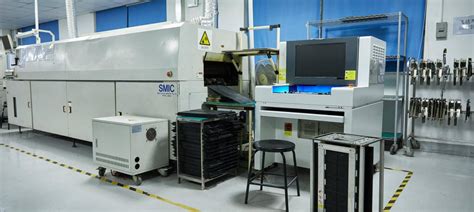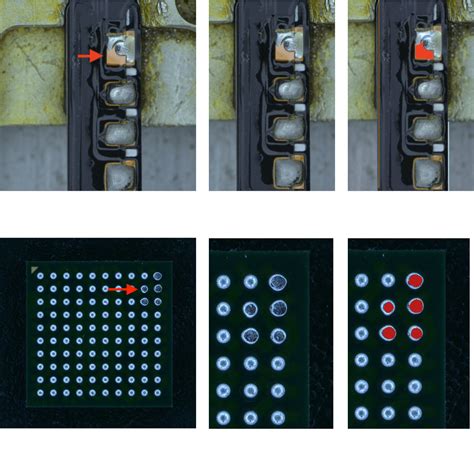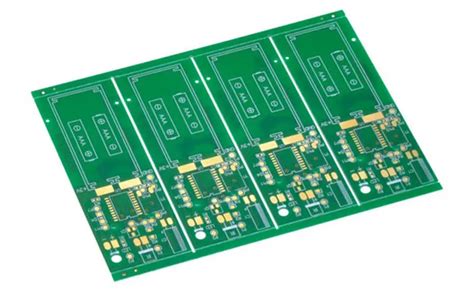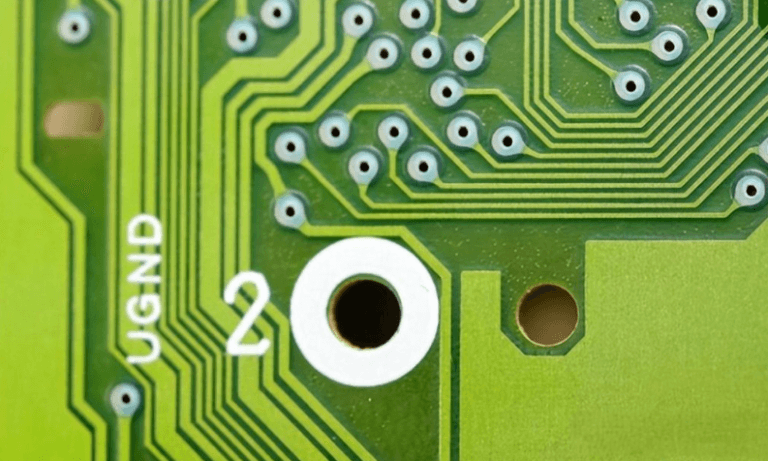Rogers rf pcb material
Understanding The Benefits Of Rogers RF PCB Material
Rogers RF PCB material has become a cornerstone in the design and manufacturing of high-frequency printed circuit boards (PCBs). This material is renowned for its superior performance in radio frequency (RF) and microwave applications, making it a preferred choice for engineers and designers who require precision and reliability. Understanding the benefits of Rogers RF PCB material involves delving into its unique properties and the advantages it offers over traditional PCB materials.
One of the primary benefits of Rogers RF PCB material is its exceptional dielectric constant stability.
The dielectric constant, or relative permittivity, is a critical parameter in RF and microwave circuits as it affects signal speed and impedance. Rogers materials exhibit minimal variation in dielectric constant over a wide range of frequencies, ensuring consistent performance. This stability is crucial for applications such as antennas, power amplifiers, and filters, where even slight deviations can lead to significant performance degradation.
In addition to dielectric constant stability, Rogers RF PCB material boasts low dielectric loss.
Dielectric loss, or dissipation factor, measures the energy lost as heat in the dielectric material when an electric field is applied. Lower dielectric loss translates to higher efficiency and reduced signal attenuation, which is particularly important in high-frequency applications. This property makes Rogers materials ideal for use in communication systems, radar, and other applications where signal integrity is paramount.
Another significant advantage of Rogers RF PCB material is its thermal management capabilities.
High-frequency circuits often generate substantial amounts of heat, which can adversely affect performance and reliability. Rogers materials are designed to have excellent thermal conductivity, allowing for efficient heat dissipation. This characteristic helps maintain the integrity of the circuit and prolongs the lifespan of the components, making it a reliable choice for demanding environments.
Moreover, Rogers RF PCB material offers superior dimensional stability.
Dimensional stability refers to the material’s ability to maintain its size and shape under varying environmental conditions, such as changes in temperature and humidity. This property is essential for ensuring the precision and accuracy of the PCB layout, which is critical in high-frequency applications where even minor dimensional changes can lead to misalignment and performance issues. Rogers materials are engineered to withstand these environmental fluctuations, providing consistent performance over time.
Furthermore, the ease of fabrication is another notable benefit of Rogers RF PCB material.
These materials are compatible with standard PCB manufacturing processes, allowing for seamless integration into existing production lines. This compatibility reduces the need for specialized equipment and processes, thereby lowering production costs and lead times. Additionally, Rogers materials are available in various thicknesses and configurations, offering flexibility in design and enabling engineers to tailor the material to specific application requirements.
In conclusion, the benefits of Rogers RF PCB material are manifold, making it an indispensable choice for high-frequency and microwave applications. Its exceptional dielectric constant stability, low dielectric loss, superior thermal management, dimensional stability, and ease of fabrication collectively contribute to its widespread adoption in the industry. As technology continues to advance and the demand for high-performance RF and microwave circuits grows, Rogers RF PCB material will undoubtedly remain at the forefront, providing the reliability and precision that engineers and designers seek.
Comparing Rogers RF PCB Material To Other High-Frequency Substrates
Rogers RF PCB material has become a cornerstone in the design and manufacturing of high-frequency printed circuit boards (PCBs). When comparing Rogers RF PCB material to other high-frequency substrates, it is essential to consider several critical factors, including dielectric constant, loss tangent, thermal conductivity, and mechanical stability. These parameters significantly influence the performance, reliability, and overall efficiency of RF and microwave circuits.
To begin with, the dielectric constant (Dk) is a crucial parameter in high-frequency applications.
Rogers materials, such as the popular RO4000 and RO3000 series, offer a low and stable dielectric constant, which is vital for maintaining signal integrity and minimizing signal loss. In contrast, traditional FR-4 materials exhibit higher and less stable dielectric constants, making them less suitable for high-frequency applications. The consistency of the dielectric constant in Rogers materials ensures predictable performance, which is particularly important in applications like antennas, filters, and amplifiers.
Another important factor to consider is the loss tangent, which measures the energy loss of a dielectric material.
Rogers RF PCB materials are engineered to have a low loss tangent, thereby reducing signal attenuation and enhancing the efficiency of the circuit. This characteristic is especially beneficial in high-frequency applications where signal loss can significantly impact performance. On the other hand, other high-frequency substrates, such as PTFE-based materials, also offer low loss tangents but may come with trade-offs in terms of mechanical stability and ease of processing.
Thermal conductivity is another parameter where Rogers materials often excel.
High-frequency circuits can generate substantial heat, and efficient thermal management is crucial to prevent performance degradation and ensure longevity. Rogers RF PCB materials typically exhibit higher thermal conductivity compared to other substrates, such as FR-4, which helps in dissipating heat more effectively. This property is particularly advantageous in power amplifiers and other high-power RF applications where thermal management is a critical concern.
Mechanical stability and ease of processing are also significant considerations when comparing Rogers RF PCB material to other high-frequency substrates.
Rogers materials are known for their excellent mechanical stability, which ensures that the physical dimensions of the PCB remain consistent under varying environmental conditions. This stability is essential for maintaining the integrity of the circuit and preventing issues such as warping or delamination. Additionally, Rogers materials are relatively easy to process using standard PCB manufacturing techniques, which can reduce production costs and lead times.
In contrast, PTFE-based materials, while offering excellent electrical properties, can be more challenging to process due to their inherent softness and tendency to deform.
This can complicate the manufacturing process and increase costs. Moreover, PTFE materials may require specialized handling and processing techniques, which can further add to the complexity and expense of production.
In summary, when comparing Rogers RF PCB material to other high-frequency substrates, it becomes evident that Rogers materials offer a balanced combination of low dielectric constant, low loss tangent, high thermal conductivity, and mechanical stability. These attributes make Rogers materials particularly well-suited for high-frequency applications where performance, reliability, and efficiency are paramount. While other substrates may offer certain advantages in specific areas, the overall benefits of Rogers RF PCB materials often make them the preferred choice for designers and manufacturers aiming to achieve optimal performance in their high-frequency circuits.
Design Tips For Using Rogers RF PCB Material In High-Frequency Applications
When designing high-frequency applications, the choice of PCB material is crucial to ensure optimal performance. Rogers RF PCB materials are renowned for their superior electrical properties, making them a preferred choice for engineers working on high-frequency circuits. To leverage the full potential of Rogers materials, it is essential to consider several design tips that can significantly impact the performance and reliability of your high-frequency applications.
First and foremost, understanding the dielectric constant (Dk) of RogeThe dielectric constant affects signal speed and impedance, which are critical parameters in high-frequency designs.
Rogers materials offer a range of Dk values, allowing designers to select the appropriate material based on the specific requirements of their application. For instance, a lower Dk material is often preferred for high-speed digital circuits, as it minimizes signal delay and dispersion. Conversely, a higher Dk material may be suitable for applications requiring compact designs, as it allows for tighter component spacing.
Another important consideration is the loss tangent (Df) of the material#.
The loss tangent measures the energy dissipation of the dielectric material, which directly impacts signal integrity. Rogers materials are known for their low loss tangents, which help maintain signal strength over longer distances and at higher frequencies. When designing with Rogers materials, it is crucial to minimize signal loss by carefully selecting the appropriate material with a low Df value, especially for applications operating at microwave and millimeter-wave frequencies.
Thermal management is another critical aspect to consider when using Rogers RF PCB materials.
High-frequency applications often generate significant heat, which can affect the performance and longevity of the PCB. Rogers materials typically exhibit excellent thermal stability, but it is still essential to incorporate effective thermal management strategies. This can include the use of thermal vias, heat sinks, and proper PCB layout techniques to dissipate heat efficiently. Ensuring adequate thermal management will help maintain the integrity of the signals and prevent thermal-related failures.
The choice of copper cladding is also a significant factor in high-frequency PCB design. Rogers materials are available with various types of copper cladding,
including rolled, electrodeposited, and reverse-treated copper. Each type has its advantages and trade-offs. For example, rolled copper offers superior surface smoothness, which is beneficial for minimizing signal loss at high frequencies. On the other hand, electrodeposited copper provides better adhesion and is more cost-effective. Selecting the appropriate copper cladding based on the specific needs of your application will contribute to the overall performance of the PCB.
Furthermore, the PCB layout plays a crucial role in high-frequency designs. Proper trace width and spacing are essential to maintain controlled impedance and reduce crosstalk between adjacent traces. Utilizing techniques such as microstrip or stripline configurations can help achieve the desired impedance and signal integrity. Additionally, careful placement of components and routing of traces can minimize parasitic effects and signal reflections, which are detrimental to high-frequency performance.
In conclusion, designing high-frequency applications with Rogers RF PCB materials requires careful consideration of several factors, including dielectric constant, loss tangent, thermal management, copper cladding, and PCB layout. By understanding and implementing these design tips, engineers can optimize the performance and reliability of their high-frequency circuits, ensuring that they meet the stringent demands of modern communication and radar systems. The superior electrical properties of Rogers materials, combined with thoughtful design practices, make them an excellent choice for high-frequency PCB applications.
The Role Of Rogers RF PCB Material In Modern Wireless Communication Systems
Rogers RF PCB material plays a pivotal role in the advancement of modern wireless communication systems. As the demand for faster, more reliable wireless communication continues to grow, the need for high-performance materials in the construction of printed circuit boards (PCBs) becomes increasingly critical. Rogers Corporation, a leading manufacturer of high-frequency laminates, has developed a range of RF PCB materials that are specifically designed to meet the stringent requirements of contemporary wireless communication technologies.
One of the primary reasons Rogers RF PCB materials are highly regarded in the industry is their exceptional electrical performance.
These materials exhibit low dielectric constant (Dk) and low dissipation factor (Df), which are essential for minimizing signal loss and ensuring signal integrity at high frequencies. This is particularly important in applications such as 5G networks, satellite communications, and radar systems, where even minor signal degradation can significantly impact overall system performance.
In addition to their superior electrical properties, Rogers RF PCB materials also offer excellent thermal management capabilities.
As wireless communication systems operate at increasingly higher frequencies and power levels, effective heat dissipation becomes a critical factor in maintaining system reliability and longevity. Rogers materials are engineered to provide high thermal conductivity, which helps to efficiently dissipate heat generated by active components, thereby preventing overheating and potential damage.
Moreover, the mechanical stability of Rogers RF PCB materials is another key attribute that contributes to their widespread adoption in the industry.
These materials are designed to withstand the rigors of manufacturing processes, including high-temperature soldering and lamination. Their dimensional stability ensures that the PCBs maintain their structural integrity and precise electrical characteristics throughout the production cycle and during operation. This reliability is crucial for applications in aerospace, defense, and other mission-critical sectors where failure is not an option.
Furthermore, the versatility of Rogers RF PCB materials allows for their use in a wide range of applications.
From high-frequency microwave circuits to advanced antenna designs, these materials can be tailored to meet specific performance requirements. This adaptability is facilitated by the availability of various product lines within the Rogers portfolio, each offering unique combinations of electrical, thermal, and mechanical properties. Engineers and designers can select the most appropriate material for their specific application, ensuring optimal performance and cost-effectiveness.
In addition to their technical advantages, Rogers RF PCB materials also contribute to the overall sustainability of wireless communication systems. The company is committed to environmental responsibility and has implemented various initiatives to reduce the environmental impact of its products. For instance, Rogers materials are designed to be RoHS compliant, meaning they do not contain hazardous substances that could harm the environment. This commitment to sustainability aligns with the broader industry trend towards greener and more eco-friendly technologies.
In conclusion, Rogers RF PCB materials are indispensable in the development and deployment of modern wireless communication systems. Their exceptional electrical performance, thermal management capabilities, mechanical stability, and versatility make them the material of choice for a wide range of high-frequency applications. As the wireless communication landscape continues to evolve, the role of Rogers RF PCB materials will undoubtedly remain central to achieving the high performance and reliability demanded by next-generation tecnologies.






